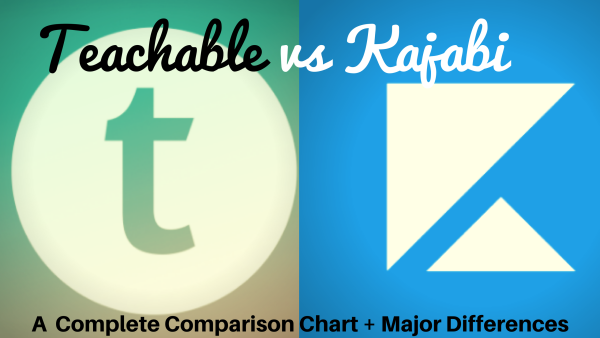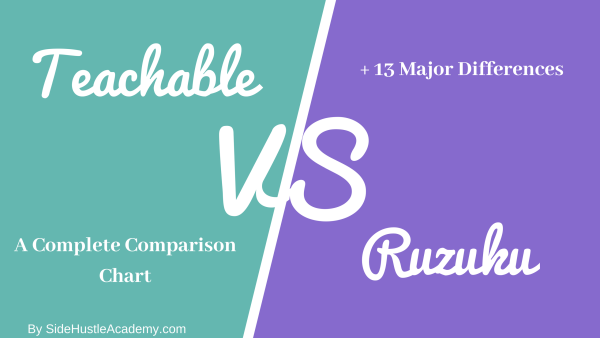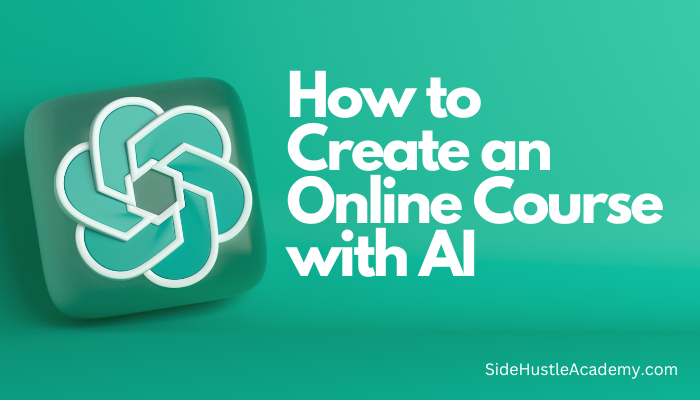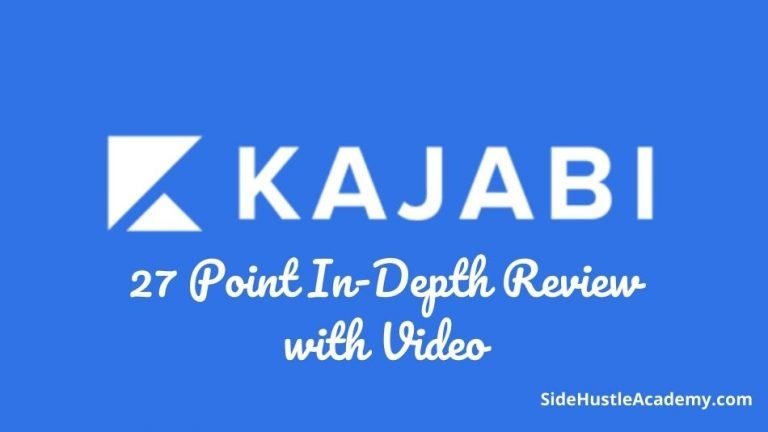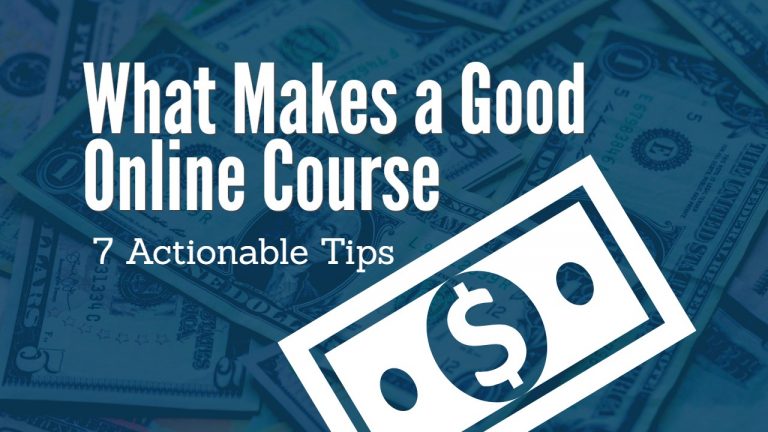Why Do Course Creators Fail & How To Fix It
Over the last few years, I’ve created a few courses. One was not so good, and the other a lot better, but nothing to write about. You can check it out here if you want.
Over that time, I’ve made many mistakes and learned a lot, and by no means done creating courses. So why do course creators fail, you might ask?
Most course creators fail because they create a course that’s too basic, charge the wrong prices, and don’t have a clear and specific outcome for the course.
In this article, I will share eight reasons why most people fail at creating online courses, and if you don’t want to end up like all the statistics, then keep reading.
1. Creating a Basics Course
Most people tend to throw basic-level stuff up onto a course, slap a price tag on it, and then put it up for sale.
The main problem with a basic entry-level course is that people can find everything on that course for free. Most blog posts and YouTube videos show off the basics on any topic for free.
No need to spend any money, and although spending a few hours with a course can be interesting, most people would rather watch a 5-minute video or read a blog post.
Your course must sell the secret sauce, the different strokes, and the insider information that isn’t easily accessible.
That’s the value that people will pay money for, so figure out the things people don’t know about your course and then use that.
Your course shouldn’t be regular information anyone can find on the internet regurgitated into an expensive course.
Instead, it should be your own personal and in-depth views on the topic, and you should speak in your voice.
Do your best to fill your course with knowledge, and then people will purchase it without any trouble.
2. Not Having a Defined Outcome
Your course must also have a defined outcome your students are trying to reach. For example, it can’t just be to learn affiliate marketing. It should be something like increasing your affiliate click-through rate by 200%.
This is a much more specific goal you want your students to achieve. When you give them a vague goal, it won’t appeal to them like something more specific.
It will also help attract the right students to your course. When you bring in the right students, all trying to achieve the same goal, you’ll create a synergy that brings everyone together.
3. Charging the Wrong Price
A course doesn’t need to be three or four figures at first, even if that is what has been advertised.
You can charge something in the range of $20-30 dollars, and people will start to come to you for your course.
After you build an audience and start to bring people in, you can charge a higher price. Once you have an audience and start to build your time, then you can charge higher prices for your best courses.
Charging the wrong price can move people away from your course and prevent them from purchasing. You do need to make sure that your course is still long enough and interesting even for the very low price.
After all, if people buy your course for $20 and find it amazing, they’ll likely pay $500. So, create great content people want and give them the secret sauce.
4. Creating an All-in-One Course
An All-on-One course is anywhere from 2 to 6 hours long and also tends to be a course that is split up into multiple modules.
It’s your longest course, where you show off everything you’ve got, and you don’t hold anything back. Every piece of information is inside this course, and it’s one that people build the most of.
Sadly, this type of course only works for someone well-known.
Quick Tip: Focus on smaller courses that will share information about a specific topic.
If you are in the writing niche, you don’t want to create a course on everything you know about writing. Instead, you might create a course on how to craft an interesting story.
That’s a small topic enough to cover in a bite-sized mini-course, which is often more interesting.
These courses are typically the teasers, the webinars, and even freebies that are given away for an email or a few bucks. They are around thirty minutes or an hour, and they will typically cover a very niche topic when it comes to the topic.
It’s a simple enough concept to explain in the time that you have, gives enough value to be sold for free, and can lead to larger courses inside of your niche.
Mini-courses also serve as a way for prospective clients to see your value and how you teach before committing to payment.
You can turn these mini-courses into larger ones later on, but right now, they will work just fine.
5. Create a Bundle of Courses
Create a Bundle of courses and other resources. You could include access to blog posts, podcasts, or other resources and items typically bundled behind a paywall.
For example, if you talk about writing as your niche, then your bundle could showcase the course, a book that you have written about writing, and perhaps some access to coaching.
Bundles also have a perceived higher value because you get more for the bundle’s value. That means you can charge more money and profit more from your customers.
For a bundle, it can be tempting to make the course short and allow the rest of the bundling to make up for it, but instead, you should ignore course length.
Worrying about the length and trying to cram everything into one or two arbitrary time limits can only cause stress, rushed content, and a much less satisfying course.
Just let your words flow, and don’t worry about the time unless you get long into one topic. In that case, you may need to tone things down.
Don’t let the items in the bundle dictate the length of the course. Instead, let the bundle complement the course itself. That’s why people buy bundles so that the items can synergize.
6. Selling Your Course in The Wrong Place
For starters, you can place your course on Udemy or Skillshare. These websites have various niches where people can find your course easily.
People can buy your course, review and rate it, and leave you the means for getting more traffic. You might not be able to use this all long-term, but instead, you need to build a place to host the course on your own.
You can use your website to host the courses you create or use a platform such as Teachable or Thinkfic. Both platforms allow your income and audience to grow, and they are very inexpensive to host your website on. Also, make sure that wherever you host the website, that it has your niche.
If your niche is on the website, then you have a much better chance of finding an audience, which leads us to our next point. Make sure to have some traffic going to your website!
7. Not Enough Traffic
Just because people are viewing your online course doesn’t mean that they are going to purchase the course.
I’ve found that only 2% of people who check out the course will buy it. So if 100 people view your website, only two will buy it. These are high numbers at best.
Don’t get discouraged about the statistics, but instead focus on building your website.
To get 20 people to (statistically) purchase your course, you must have at least 1,000 people visiting your course page.
Again, statistics aren’t always reliable, but they are a good baseline. Either way, you should ensure you have some traffic to see your course.
If you don’t have any traffic on your website, focus on building that before you put all your time into an online course.
8. Giving Up Before You Even Get Started
Creating a course, and marketing it, isn’t for the faint of heart.
It takes a lot of time, and while you can get big money in the long term, you aren’t going to make that big money quickly.
You need to put in time and energy not just to build the course but also to build the audience who will look at that course and purchase it.
Giving up before you get started and giving up in the middle of the process is sadly all too common. It might seem things are not moving along enough for you, but you must keep going and not give up.
That’s the only way to build a successful online course and not succumb to one of the reasons online course creators fail.
9. Not Having a Clear End in Mind
Finally, one of the last things you need to understand when creating your course is to have a clear result you want your students to achieve.
For example, your result can’t be something vague like to be a better basketball player. It needs to be more specific like this course will teach you how to make 8 out of every ten free-throws guaranteed.
This gives a more defined result that people can understand. If you have a vague open result, it will not catch people’s attention and, in most cases, turn people off.
Build Your Course!
Building an online course is something that every business owner should try to do because it is a great way to bring your audience members in.
It’s also a great way to make some passive income and have some real fun teaching your course!


